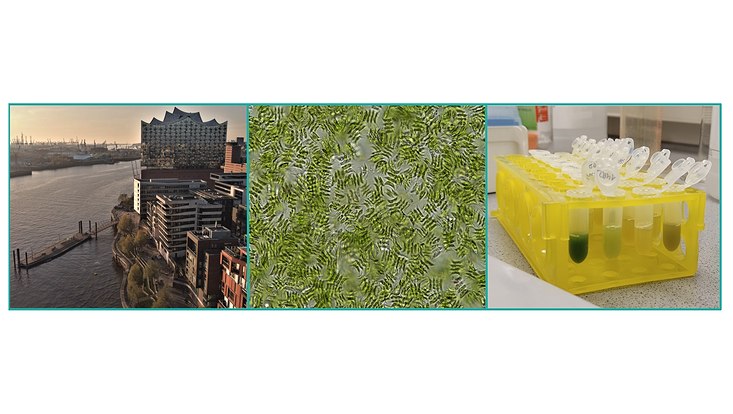Phytoplankton use a food mix for growth
7 February 2024, by Website Team Biologie

Photo: Nele Martens/Çağıl Gümüş
Phytoplankton are small organisms in water that can bind carbon dioxide. As part of research during her doctoral thesis, Nele Martens has now been able to show that 17 phytoplankton strains are also able to use organic compounds (e.g. sugars or amino acids) for their growth. She has published the results in the journal 'Proceedings of the Royal Society of B'.
Phytoplankton are free-floating, microscopic organisms that cannot move independently. They are essential for the estuarine ecosystem - estuaries that are exposed to the interplay of ebb and flow - as they serve as a food source for numerous animal species and bind carbon dioxide (CO2) through photosynthesis. However, an increasing number of studies show that many groups also acquire organic carbon from their environment.
"The ability of phytoplankton to generate nutrients and energy from different sources could provide a strategy for dealing with fluctuating resource availability, especially in highly dynamic ecosystems such as estuaries," says Nele Martens, a doctoral researcher at Research Training Group 2530 at the Universität Hamburg.
In her doctoral thesis, she investigated the effects of 31 dissolved organic compounds on the growth of 17 phytoplankton strains isolated from the Elbe estuary spanning four functional groups. The strains examined included green algae, cyanobacteria and diatoms. The aim was to compare the ability of different phytoplankton species from different functional groups to use dissolved organic carbon for growth.
"All of our strains were able to make use of at least 1 and up to 26 organic compounds for growth, regardless of season or origin. Reduced light availability, typically appearing in turbid estuaries and similar habitats, resulted in an overall poorer ability to use organic substances for growth”, says Martens, lead author of the study. “This indicates that organic carbon acquisition is not primarily a strategy to deal with darkness.”
Our results give further evidence for mixotrophy, e.g. the ability to both assimilate carbon dioxide and utilize organic matter, being a ubiquitous ability of phytoplankton and highlight the importance to consider this trophic strategy in research.


